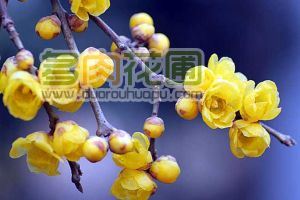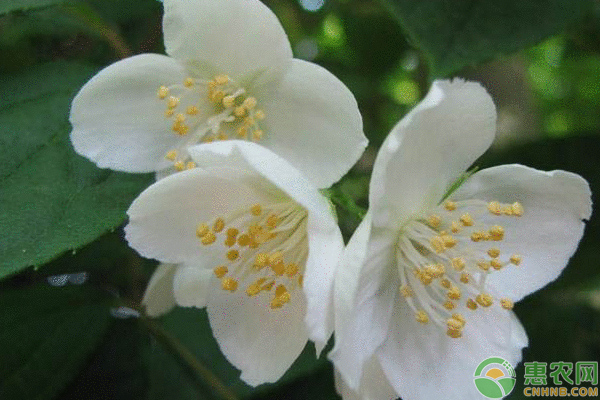Propagation methods of plum blossom
Plum propagation can be used grafting, cuttage, layering, sowing and other methods, but grafting is the main, cuttage, layering followed by sowing is rarely used.
Grafting propagation of plum blossom propagation methods
Grafting is a common method of plum blossom propagation in China. Grafting rootstock can be selected peach, apricot, apricot and plum seedlings, of which apricot, apricot, plum for the best rootstock. Grafting methods are commonly used bud grafting and cutting. Bud grafting saves scion, the method is simple, suitable for rootstock and scion small circumstances, survival rate is high. Bud grafting can be used "T"-shaped bud grafting method. The method comprises the following steps of: selecting a plump axillary bud at the upper part of a 1 - 2 year old healthy branch as scion, cutting horizontally at the position about 0.5 cm above the axillary bud, reaching the xylem deeply, cutting obliquely vertically from the position about 0.5 cm left and right of the axillary bud, making the scion bud appear a shield shape with a wide upper part and a narrow lower part, cutting the surface smoothly, removing the xylem inside, and cutting off the leaves only to leave petioles. At the base of rootstock seedling 5~6 cm away from the ground, select a smooth skin surface and cut it into a "T"-shaped incision, the length and size of which are similar to those of scion. Then insert the bud into the interface, make the incision tightly combined, and finally bind it with plastic strips, exposing the petiole and bud outside. After grafting, care should be taken to cut off the budding leaves and rootstocks at any time.

seed reproduction
Seed directly from seed. It is necessary to pay attention to collecting fully mature fruits from excellent mother plants with large fruits and small stones. Generally, it is better to sow in autumn, and the specific time can be carried out in late September. Water well and cover with fine soil or sand. In the spring of the following year, when the seedlings grow to 10 cm to 15 cm, they can be transplanted from the seedbed. If spring sowing propagation, then the seeds should be washed and dried with wet sand layer sand storage, early spring out of drilling. Plum trees propagated from seeds are drought tolerant. It grows vigorously and is suitable for planting on hillsides. But the plum trees bred by this method are genetically unstable and have large variation.
grafting propagation
branch grafting
In addition to plum seedlings, rootstocks can also be used as rootstocks of peach, peach, plum and apricot, and plum rootstocks are the best. It can be lapped or split, the so-called lapped, that is, the lower end of the scion and the upper end of the rootstock are beveled into a horse ear shape with a sharp knife, and then one side is aligned with the green skin layer, and the connection is tightened; the so-called split, that is, the lower end of the scion is cut into a wedge, the rootstock is split, and the wedge scion is inserted, and attention is paid to aligning the green skin layer with one side and tightening it. Both overlapping and splitting are done by branch grafting, usually in early spring before sap flows.
bud grafting
During the growth period of plum trees, bud grafting can also be carried out on plum and apricot seedlings as rootstocks, namely, at the stem base of the rootstocks, a bud grafting knife is used to cut a "T" shape deep into xylem, the cortex is gently picked, the bud eyes on the branches of plum varieties to be propagated are cut into shield-shaped buds, and the buds are quickly inserted into the "T"-shaped cortex of the rootstocks, and after 15 to 20 days, the scion bud eyes are healed with the rootstocks, and then the scion bud eyes can be loosened.
Whether branch or bud grafting, after survival should be cultivated in nurseries for 1 to 2 years, and then used for planting.
For fast tree plum blossom, can be transplanted, survive after re-cutting, the next year in the new branch on the need for good plum varieties. Peach as the rootstock, grafting easy to live, currently widely used in production.
The commonly used root burying method, peach grafting plum blossom, fast growth, early flowering, but three years later easy to appear "big and small feet" phenomenon, can first use peach stock grafting plum blossom, grafting growth after one year, all dig up, planting, so that the grafting site is lower than the ground level, buried 4 to 7 cm, with a sharp knife in the plum grafting site longitudinal cut several holes, deep to the xylem, and 25ppm ABT rooting powder No. 2 solution mixed mud wrapped wound. Re-cultivate soil 15 cm to 25 cm, pay attention to moisture preservation. After growing for one year, plum trees can take root, so that plum trees can form two layers of roots after growing up, the upper layer is plum roots, the lower layer is peach rootstock roots, the upper roots play a role in pot or planting greening, the lower roots can be removed, so that plum trees can maintain normal growth.
cutting propagation
Cuttage propagation of plum blossom is simple and easy to operate, and the technique is not complicated. The survival rate of cuttings treated with 500ppm indoleacetic acid or 1000ppm naphthylacetic acid can be improved, and the rooting of varieties difficult to root can also be promoted. Plum cuttings in November as well, because at this time deciduous, branch storage has sufficient nutrients, easy to root survival. Choose an annual 10 cm to 12 cm long stout branches for cuttings, cutting most of the branches buried in the soil, leaving only two or three centimeters of soil surface, and leave a bud outside. Cuttage soil loose requirements, good drainage.
- Prev

How to plant plum blossoms
How to plant plum blossom: 1. The choice of plum blossom planting site must meet the requirements of its ecological habits, and it is best to choose a place with high terrain, good drainage and convenient irrigation. Sandy loam or loam with slightly acidic and deep soil layer; neutral or alkaline light loam can also be planted
- Next

The culture method of plum blossom: how to cultivate plum blossom? How to fertilize plum blossoms and when to fertilize
Plum blossom culture method, plum blossom should be purchased at the beginning of the winter blossom, when the market volume is large, the price is cheap, the flower is in a semi-dormant state, the plant recovers quickly, you can see the pile shape, flower shape, smell the fragrance. To select a good pile, the rootstock should be apricot plum, the trunk is horizontal, thick and old, the grafting point should be low, and the branches should be sparse.
Related
- Fuxing push coffee new agricultural production and marketing class: lack of small-scale processing plants
- Jujube rice field leisure farm deep ploughing Yilan for five years to create a space for organic food and play
- Nongyu Farm-A trial of organic papaya for brave women with advanced technology
- Four points for attention in the prevention and control of diseases and insect pests of edible fungi
- How to add nutrient solution to Edible Fungi
- Is there any good way to control edible fungus mites?
- Open Inoculation Technology of Edible Fungi
- Is there any clever way to use fertilizer for edible fungus in winter?
- What agents are used to kill the pathogens of edible fungi in the mushroom shed?
- Rapid drying of Edible Fungi

